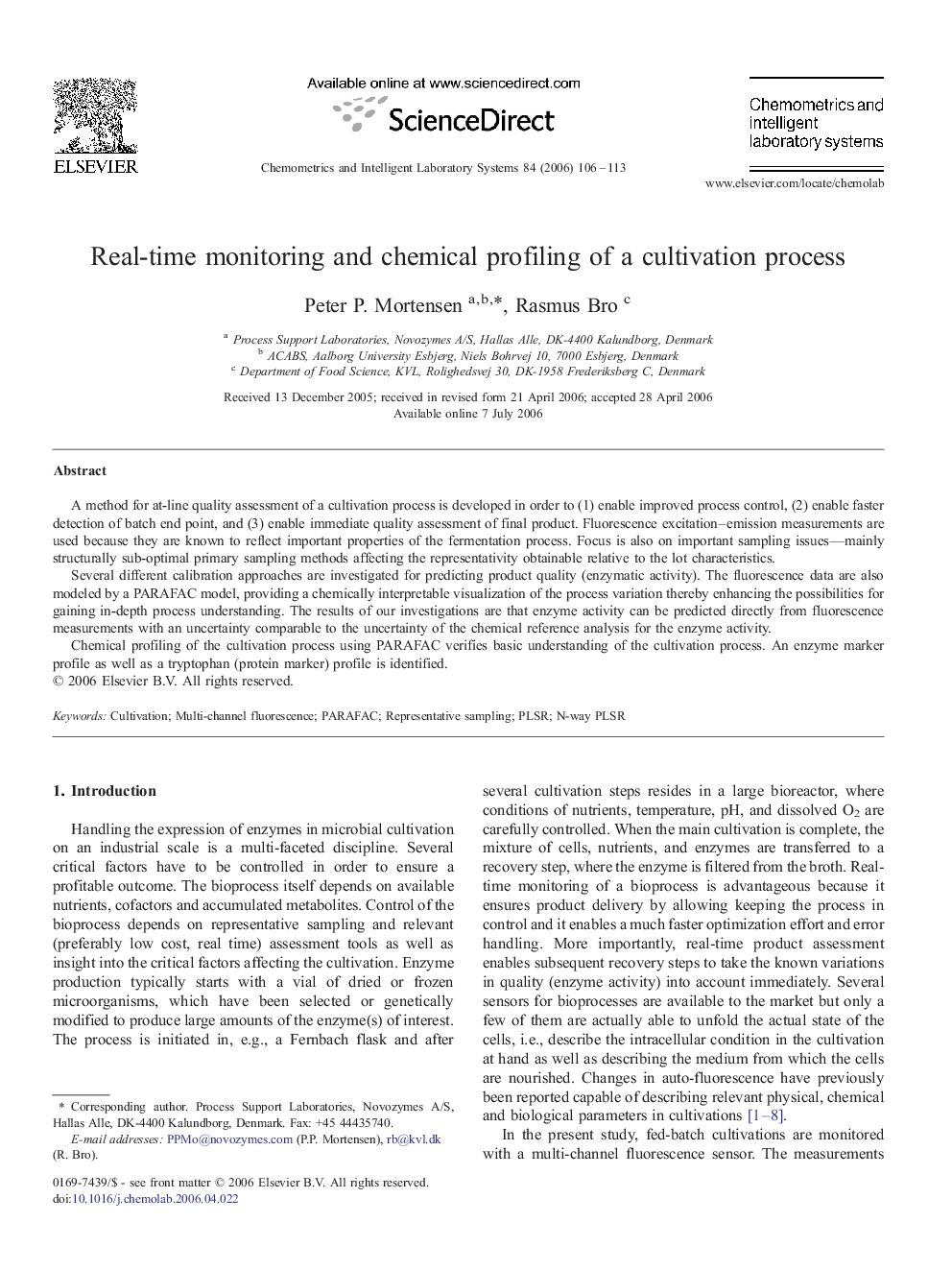| Article ID | Journal | Published Year | Pages | File Type |
|---|---|---|---|---|
| 1180809 | Chemometrics and Intelligent Laboratory Systems | 2006 | 8 Pages |
A method for at-line quality assessment of a cultivation process is developed in order to (1) enable improved process control, (2) enable faster detection of batch end point, and (3) enable immediate quality assessment of final product. Fluorescence excitation–emission measurements are used because they are known to reflect important properties of the fermentation process. Focus is also on important sampling issues—mainly structurally sub-optimal primary sampling methods affecting the representativity obtainable relative to the lot characteristics.Several different calibration approaches are investigated for predicting product quality (enzymatic activity). The fluorescence data are also modeled by a PARAFAC model, providing a chemically interpretable visualization of the process variation thereby enhancing the possibilities for gaining in-depth process understanding. The results of our investigations are that enzyme activity can be predicted directly from fluorescence measurements with an uncertainty comparable to the uncertainty of the chemical reference analysis for the enzyme activity.Chemical profiling of the cultivation process using PARAFAC verifies basic understanding of the cultivation process. An enzyme marker profile as well as a tryptophan (protein marker) profile is identified.
